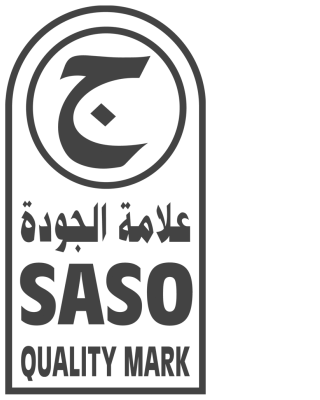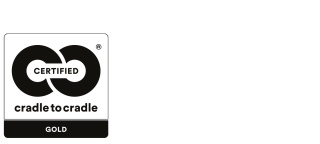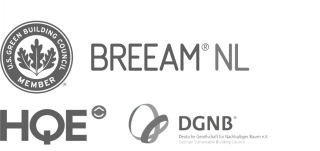Quality and standards
Mosa tiles are high quality products that are designed and manufactured in the Netherlands and shipped worldwide. The products are manufactured in accordance with the European Standard EN 14411 and often exceed the specific requirements set by this standard.
European building regulations
Mosa tiles are manufactured and tested in accordance with EN 14411 and meet the CE marking requirements outlined by the European Construction Products Regulation (CPR). Based on their intended use, declarations of performance have been drafted and made available for our indoor wall tiles and our indoor and outdoor floor tiles, containing information about their key properties.

American building regulations
The term 'porcelain' is defined by an American standard. The Porcelain Tile Certificate, issued by the Porcelain Tile Certification Agency (PTCA) serves to identify true from falsely claimed porcelain tile and protect architects, distributors, installers and end users from quality failures, installation problems and liability issues.
Mosa tiles exceed the ANSI A137.1 standard for both ceramic wall tiles and porcelain floor tiles. Thanks to their low moisture absorption, our Ultragres floor tiles bear the Certified Porcelain Tile hallmark from the Porcelain Tile Certification Agency (PTCA) and were tested in accordance with ASTM C373 with a moisture absorption rate of 0.5% or less. The anti-slip properties of our tiles were tested by TCNA in accordance with ANSI A137.1, Section 9.6.1 and were deemed suitable for all applications that are expected to meet specific slip-resistance requirements. Mosa tiles may legitimately claim to be of true porcelain quality.

Important note and disclaimer
Façade application, cladding, or similar
Mosa unglazed Ultragres tiles are manufactured with the proprietary Ultrages production process and have a water absorption of < 0.1% on the tile surface and < 0.3% on the tile body. The tiles are frost proof and generally suitable for use as a façade finish, provided that (1) the tiles are installed and affixed to the surface in accordance with TCNA guidelines, (2) the tiles are installed and used in accordance with the applicable specifications provided by a licensed architect or engineer, and (3) the tiles are installed and affixed in accordance with an appropriate setting material and in accordance with the applicable setting material manufacturer’s instructions. Prior to installing or using Mosa tiles in any exterior vertical application, the purchaser and installer must verify that the setting material manufacturer and supplier have verified that the dimensions and color choices of the proposed tiles are appropriate for the proposed application.
Movement joints: Installation of Mosa porcelain tiles on exteriors must be in accordance with the applicable requirements of the Tile Council of North America (TCNA) Handbook requirements for exterior wall details. Movement joints must comply with EJ-171 of the current TCNA Handbook. In addition, the size and interval of movement joints must be in accordance with the TCNA Handbook and specified by a licensed architect and/or engineer with strict attention to the environmental demand of the proposed application. It is crucial that each project is evaluated individually and that the architect/engineer and setting material manufacturer are informed of the details associated with the proposed application, verify that the proposed application is acceptable, and specify the corresponding requirements with respect to proposed use(s) and installation of the tiles. Porcelain tiles have expansion and contraction characteristics, meaning that proper movement accommodation is critical for proper installation.
Cap Flashing: It is imperative to avoid water intrusion into the bond coat in connection with any exterior applied veneer. The designer and installer must ensure proper capping and flashing at the roof line, at the top of any exterior applied veneer, and any other potential sources of water intrusion. Failure to comply with these requirements can lead to efflorescence, latex leaching and freeze thaw and other damage and/or failure of the tile. Those specifying or purchasing the tiles should ensure their architects/engineers and contractors are aware of the above requirements and that they are aware that movement joint/grout detail and cap flashing are provided in the specifications/construction plans and drawings.
In addition, the project architect/engineer and contractor must be informed that setting materials specifically recommended for exterior applications of porcelain tiles are to be used for setting the tiles. We strongly recommend that the involved professionals hold a pre-construction meeting and create a mock-up of appropriate scale to be contained in the construction plans and drawings.
The foregoing are intended to be guidelines only. Each project and application have their own unique characteristics and requirements. The applicable architects/engineers/contractors/design professionals must determine whether the tile is suitable for installation in any given application and determine and specify the applicable products, materials and installation techniques to be used.
The only representations and warranties provided by Mosa are those set forth in Mosa’s standard warranty terms governing the applicable product(s). The foregoing guidelines are not intended to be, and are not, representations and warranties with respect to the tiles and/or their installation and Mosa disclaims all liability for any person’s use of, or failure to use, these guidelines.
Additional approvals by country
The Netherlands
Mosa Ultragres floor tiles are NL-BSB certified (Building Materials Decree) according to assessment guideline BRL52230 (certificate number IKB1578) This means, among other things, that Mosa Ultragres tiles comply with all the environmental specifications of the Dutch Soil Quality Decree and are also suitable for outdoor use.
Mosa wall and floor tiles are KOMO certified (Organization for the Certification of Building Materials, certificate number IKB1466) according to BRL1010 and therefore comply with the higher standards for dimensional stability and flatness in terms of EN14411, appendix G. This means that Mosa tiles also comply with the standards set for the materials used according to URL35-101, chapter 4, for the purpose of obtaining the KOMO process certificate for the application of tiles (BRL1017).

France
Having obtained a UPEC certificate, Mosa meets the requirements for using construction materials at French non-residential sites, such as shopping centres, airports, and railway stations. The UPEC certificate is a voluntary certificate from the CSTB for construction materials, with a specific focus on products and product locations. Specific requirements are set for wear, durability, and chemical resistance in addition to the standards set by EN 14411.

Germany
Mosa floor tiles are tested and certified using the slope method for application in spaces for which stringent slip resistance requirements apply (DIN51097 for barefoot areas, DIN51130 for footwear areas). Our floor tiles are also tested for skid resistance in accordance with the GMG200 method (dynamic friction coefficient). Test certificates are available upon request.
China
Mosa floor tiles are CCC certified and meet the GB/T 4100 quality standard. CCC certification makes it possible to export Mosa floor tiles to China and trade them freely.

United Kingdom
The anti-slip properties of Mosa floor tiles are tested in accordance with the British Standard BS 7976 (pendulum test). Mosa floor tiles are generally categorized as having a low slip risk (pendulum value of 36 or more).
Saudi Arabia
Mosa tiles completed a comprehensive evaluation of the product as well as the quality system used in our production through auditing, testing and inspection and thus achieved the SASO Quality Mark (SQM). The SASO Quality Mark (SQM) is a mark of conformity granted to the products that demonstrate compliance with the relevant national standards set by the Saudi Standards, Metrology and Quality Organization (SASO) in Saudi Arabia. The SQM is proof that Royal Mosa has implemented an effective quality management system to ensure continuous compliance with the aforementioned standards. The SQM also facilitates the entry of products through customs ports, by simplifying the process significantly.

Sustainability
Sustainability is an important criterion for every building project. This means that all parties should make informed decisions based on independently verified facts and figures. Mosa accepted this challenge by having the sustainability of all of its products accredited by an independent body.
Cradle to Cradle
Sustainability is a top priority when developing new products, responsible production processes, and optimum working conditions. Mosa was the first ceramic tile company in the world to receive Cradle to Cradle Certified® Gold certification for its entire tile collection.

LCA and EPD
Mosa had an externally validated lifecycle analysis (LCA) conducted in accordance with the European Standard EN 15804, which highlights the sustainable nature of our tiles. On the basis of this analysis, Mosa was granted an Environmental Product Declaration (EPD) for its wall and floor tiles.
ISO 14001
Mosa has employed an ISO 14001-compliant environmental management structure since 2007 and received ISO 14001 certification for this in 2008.

AEO-C
As a professional exporter, Mosa complies with international customs legislation. Mosa has proven that it is a reliable partner in the export supply chain, having the status of Authorised Economic Operator (AEO-C) since 2018.

National product databases and integration with sustainable building labels
The results of the LCA as shown in our EPD have been included in several sustainable product databases, such as the Nationale Milieudatabase (the Netherlands), DGNB Navigator (Germany), and FDES (France). This makes it possible to test Mosa's positive contribution to sustainable buildings against various international methods for assessing the sustainability of a building, such as LEED, BREEAM, DGNB (Germany), and HQE (France).

Quality and safety
Our tiles and the production processes used to create them meet the optional and mandatory health, environmental, and safety standards to which the international community must adhere.
ISO 9001
Quality management is a top priority at Mosa. Mosa is therefore certified in accordance with the international standard for quality management systems. ISO 9001 is used to help Mosa meet the requirements set by its customers, the laws and regulations governing products, and the requirements of the organisation itself.

Safety
Mosa tiles are made using advanced production methods and high quality raw materials. This allows Mosa to guarantee the quality of its tiles. Mosa has made several material safety data sheets available to ensure the processor's safety during production.
QHSE Policy
Quality and safety are top priorities at Mosa. The Quality, Health, Safety and Environment policy (QHSE policy) describes how the policy with regards to quality, health, safety and the environment was determined and is being implemented. This QHSE Policy will be assessed yearly.
